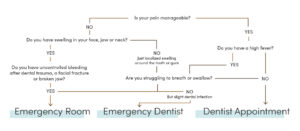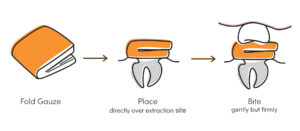Find a Walk-In Dentist Near You (Same-Day Appointments)
Looking for a walk-in or same-day dentist? One quick call secures your spot, shortens your wait time, and ensures that the dentist is ready to meet your needs immediately.

Language
Coverage
Type of Care
Coverage
Language
Type of Care
Loading dental practices...
Types of Walk-In Dental Service
Severe Toothache
Immediate treatment for throbbing or unmanageable aching.
Cracked or Chipped Tooth
Quick fixes to safeguard your smile and stop pain.
Knocked-Out Tooth
Special steps to preserve a tooth, if seen quickly.
Lost Filling or Crown
Temporary repairs to keep you comfortable until a permanent fix.
Dental Infection
Drainage or medication to control swelling and infection.
Urgent Extraction
Same-day removal if a tooth can’t be saved.
What to Expect During Your Emergency Visit
Call First

Assessment
A dentist will check your symptoms and may even take X-rays.

Treatment
Immediate pain relief, repair, or a temporary solution, plus a follow-up plan.
Why You Shouldn’t Wait
Tooth problems don’t go away on their own. What feels like a minor annoyance today can develop into a serious infection, an abscess, or even tooth loss if you wait too long. The longer you put it off, the worse it gets, and the more it costs to fix. That’s why calling ahead before you walk in matters. It makes sure the dentist is ready for you and can see you as soon as possible. Getting care right away protects your teeth, your health, and your wallet, while giving you relief you can trust.
What Your Visit Looks Like
When you call for a same-day appointment, the office reserves a spot for you. When you arrive, check-in is quicker, and the dentist will ask about your pain, examine you, and possibly take an X-ray. They’ll explain what’s going on in simple terms and provide you with fast relief, whether that’s medication, a temporary solution, or treatment to get the problem under control. Most visits take less than an hour, and before you leave, you’ll get a clear plan for next steps. Knowing the process makes the whole visit less stressful, especially when you’re already hurting.

Emergency or Not? Here’s How to Tell
Not every dental issue means drop everything and run. But some do.
Call a dentist now if you have
- Sharp, ongoing pain
- Swelling, especially in your jaw or face
- Bleeding that won’t stop
- A knocked-out tooth… it can be saved!
If you have a fever over 101°F that lasts for more than a day, signs of infection, or trouble breathing, please contact your primary care doctor.
It can probably wait a day, if you have
- A dull ache
- A chipped tooth with no pain
- A lost filling or crown that isn’t hurting
- Mild sensitivity
Still unsure? Better safe than sorry. One quick call will clear it up.

Payment & Insurance Options
Worried about the cost? You’re not alone. Dental surprises rarely line up with payday, but that doesn’t mean you have to put off getting the care you need. Most offices take insurance and will walk you through what’s covered before you sit in the chair. No insurance? You’ve still got choices. Many dentists offer cash discounts, flexible payment plans, or membership programs that lower the bill. The key is to ask about costs when you call, so there are no surprises. Same-day dental care should be within reach, and there’s almost always a way to make it work for your budget.
Pre-Visit Tips for Patients in Pain
Waiting for your appointment can feel like forever, but there are a few things you can do to make it easier. Rinse gently with warm salt water to keep the area clean. Put a cold pack on the outside of your face to ease swelling. Take over-the-counter pain medicine if it’s safe for you. If a tooth gets knocked out, don’t scrub it, keep it moist in milk or saliva and bring it with you. Lost a filling or crown? Cover it with dental cement from the drugstore. These quick steps give you some relief until you see the dentist.

What to Bring and How to Prep
To make your visit go as smoothly as possible, try to bring the following
- A photo ID
- Your insurance card, if you have one
- Any dental devices or pieces of a broken tooth
- A list of any medications you’re taking
- Notes about your dental history, if you know it
What to Bring and How to Prep
And feel free to ask questions! Here are a few good ones to start you off
- What’s causing the pain?
- What are my options?
- How should I care for this after treatment?
When Walk-In Is Not Appropriate
Most dental problems can be handled with a same-day visit, but some situations are more complicated. If you have heavy swelling in your face, trouble breathing, bleeding that won’t stop, or a possible broken jaw, skip the dental office and go straight to the ER, or call 911. Dentists can treat urgent dental issues fast, but life-threatening problems need a hospital first. Once you’re safe, your dentist can step in to handle the rest. Knowing the difference saves precious time and makes sure you get the right care, in the right place, when it matters most.
Find a Walk-In Dentist Near You
Don’t suffer, and don’t risk making things worse. Call to book a walk-in dentist appointment today and get fast relief.
Frequently Asked Questions
Can I just walk in without calling first?
No. Always call first to make sure there’s an opening. Same-day spots are common, but the office needs a heads-up to get you in fast.
What qualifies as a dental emergency for same-day care?
Bad tooth pain, swelling, infection, knocked-out teeth, broken teeth, or lost fillings. If it hurts or looks serious, call and ask for a same-day visit.
What do I do if I’m in severe pain before reaching the office?
Take over-the-counter pain medicine, rinse gently with salt water, and use a cold pack on your face. Then head in as soon as possible.
Do you accept insurance or offer payment plans?
Most dentists take insurance. If you don’t have it, many offices also offer cash discounts, payment plans, or savings programs.
What if my tooth was knocked out? Can you save it?
Often, yes, if you act fast. Keep the tooth moist in milk or saliva, don’t scrub it, and bring it with you right away.
Are you open weekends or evenings for walk-ins?
Many offices are. Search on our site to find dentists with night and weekend appointments, and be sure to call to confirm their availability before you make a trip.
How long will I wait if I walk in?
Usually less than an hour, depending on how busy the office is. Calling first helps cut the wait.
Do you offer teledentistry or remote triage?
Some dentists do. They can check symptoms over video or phone and tell you if you need to come in right away.
Is there anything I should bring to my visit?
Yes. Bring an ID, insurance card, any medications you take, and any broken tooth pieces or dental devices.
What if I need more treatment after the walk-in visit?
You’ll get pain relief or a quick fix right away. Then the office will set up a follow-up to finish the job.
Can children walk in for emergencies?
Yes. Pediatric dentists see kids for same-day problems and use gentle techniques to keep them calm and comfortable.
What safety and COVID protocols are in place?
Dental offices clean equipment carefully, wear protective gear, and space out patients to keep everyone safe.
Related Information

Should You Go to the ER for Tooth Pain? A Quick Guide
Whether you should go to the ER for tooth pain depends on the severity of your pain and what other symptoms you’re experiencing. Read on for help deciding how to find relief.

How to Stop Bleeding After Tooth Extraction: Easy Tips for Immediate Relief
After a tooth extraction, some bleeding at the site is normal and will usually slow down within 2-3 hours. Gentle oozing (think pink saliva) will often continue for the first 24 hours. Below you’ll find tips for helping to stop the bleeding, and how to tell the difference between normal recovery and signs that you should call your dentist.

Why Does My Tooth Hurt at Night? 5 Possible Reasons and What You Can Do Right Now
Dental problems often feel more painful at night because lying down increases blood flow to the head, which heightens pressure and sensitivity. Other common causes include increased sinus pressure and unconscious jaw clenching and teeth grinding. While the long-term solution may require a visit to the dentist, there are measures you can take immediately to get some relief.
